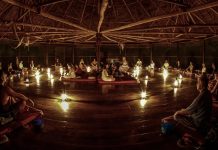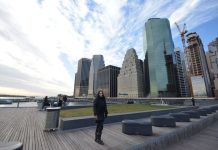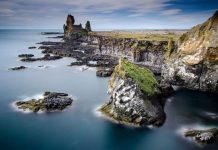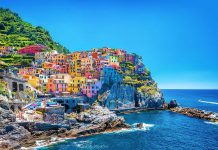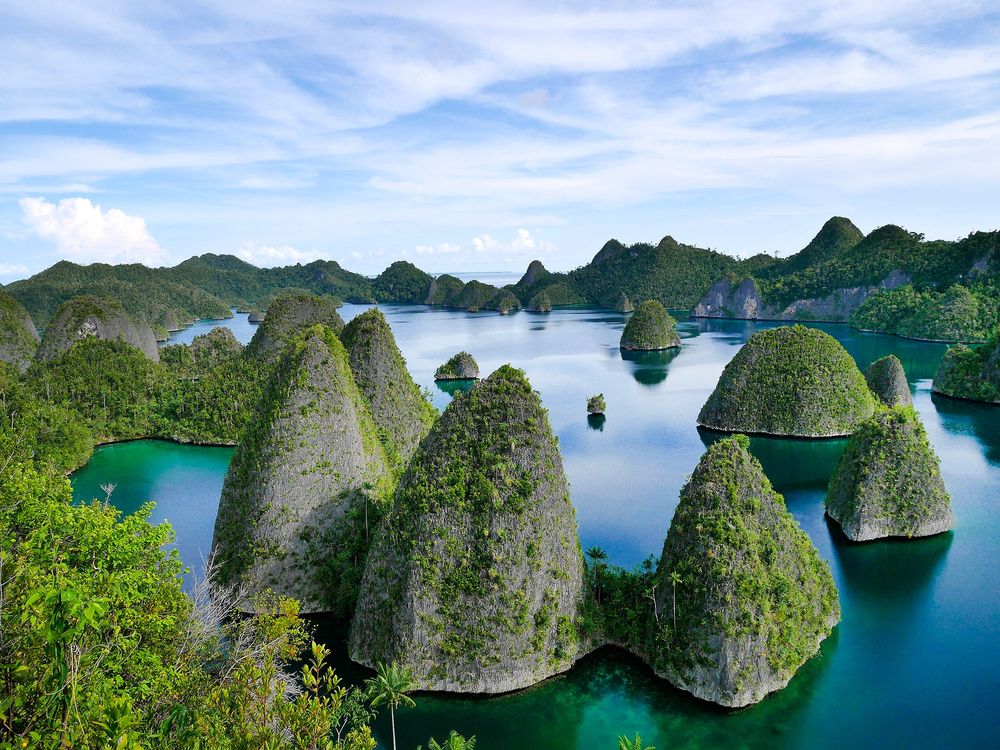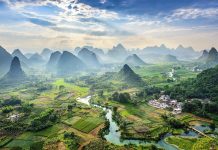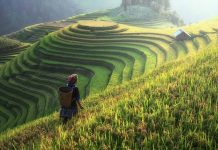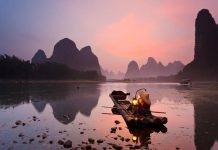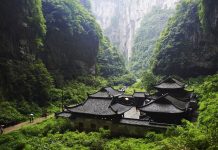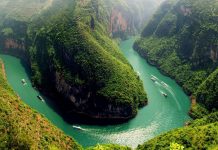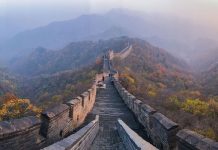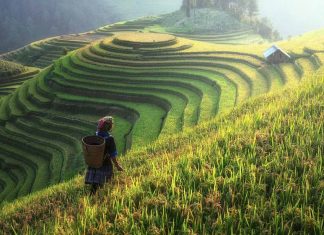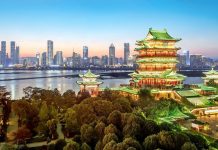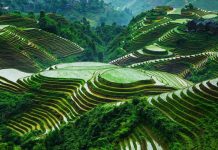The Buddhists of the Tang era considered these mountains to be the earthly domain of the Bodhisattva Dizanwan, the lord of the afterlife. Jiuhuashan is the best fit for this role. The fog shrouding the mountain temples with a dense veil creates an atmosphere of the other world, where the souls of the dead are waiting for the atoning prayers of the hermit.
This is in the past, and now they pray here, mainly for the sending down of worldly riches. Brand-new idols, brisk merchants of amulets and expensive incense come across at every turn. Believers, as a rule, do not pay any attention to the ego. After seeing the monasteries behind the yellow walls, inhaling the fragrance of incense and listening to the MRZ-chants from the pilgrimage players, you will understand that these mountains have their own aura, not like the Huangshan one.
In the VIII century, a holy monk from Korea, Kim Keo Kook, settled on Jiuhuashan and spent 5 years in continuous meditation. After the death of the ascetic, the disciples declared him the incarnation of Dizang-wang.So Jiuhuashan became one of the four sacred Buddhist mountain ranges of the Celestial Empire. Every year in the seventh lunar month, pilgrims come here to celebrate the anniversary of the earthly death of Kim Kyao Kook, which lasts 30 days. In numerous temples, they are greeted by statues of the Lord of the underworld, holding a shining gem in his hand — he leads the lost souls through the darkness of hell.
Attractions
The bus will drop you off at the station in the new Jiuhuashan district. This is the main local bus station, next to which there is a ticket office. The ticket price includes a ride on a special bus to the village of Jiuhu-atze – a stop to the right of the ticket offices. Almost all local hotels are concentrated in the village. Jiuhuatze is located about halfway to the peaks of the mountains, or, as the locals say, “at the navel of the Buddha.” The bus stop is located near the gate, from which the main rural street of Fuzhong (Furong Lu) goes in a southerly direction with expensive hotels and restaurants. To the right of the street lies a small square, beyond which the Jiuhua Laojie street begins — the center of cheap accommodation, inexpensive food and souvenir trade.
Zhiyuansy Monastery
Слева от главных ворот деревни. Монастырский храм всегда полон верующих, отбивающих поклоны на все четыре стороны света. По вечерам братия распевает буддийские гимны — присоединиться может любой желающий.
Dongyasi Monastery and Huixiang Temple
The largest and most colorful monastery in the village. Even the railings of the stairs are made in the form of carved dragons. The ceilings and supporting pillars are brightly painted, and the main decoration of the monastery is three gilded statues of bodhisattvas. One of them sits at a height of at least 25 meters.
The sanctuary was built under a sheer cliff in 1630 in memory of the famous monk Xia. His embalmed body, dressed in a rich robe, is still kept in a glass case surrounded by lotus-shaped lamps. If you feel tired, use the funicular.
After reaching the crest of the ridge, follow the southward path leading to the Dongyasi Don Monastery and the Huixiang Temple. Towering above it is a tiered pagoda of 10,000 Buddhas, painted in the color of ancient bronze and effectively illuminated at night. The western trail leads back to the village, and the eastern one passes by the Phoenix Pine and the cable car station to Tiantai Peak. This is the main peak of Jiuhuashan. You will walk along it for two 2 hours and will be able to visit several small Buddhist idols. The cable car reduces the journey to 10 minutes. There is almost always fog at the top.
Tiantaisi Monastery is located on the top. In the Dizangdian prayer hall, the lord of the Buddhist hell sits in proud solitude, and in the hall of Ten Thousand Buddhas, he is surrounded by figures of prostrate sinners. Strings of Buddha figurines stretch along the walls.
At the very beginning of the stairs leading to the Tiantai nickname, another path goes to the right. It will take you to the higher peak of Shivanfeng, where there are almost no tourists and no one will stop you from admiring the floating fog.
The easiest way to climb to the top is to take a bus from the village to the Phoenix Pine, and then transfer to the kanagka trailer. You can also climb the last section to the top on foot. It should be remembered that those who choose the bus lose the opportunity to see the Baisuigong Temple.

